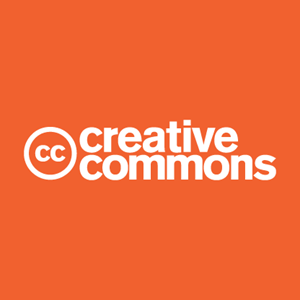Open Educational Resources (OER): Creative Commons and OER
Creative Commons: What Is It?
Creative Commons is a worldwide nonprofit organization that supports the open sharing of intellectual content. Here's what they say about themselves:
Creative Commons is a nonprofit organization dedicated to building a globally-accessible public commons of knowledge and culture. We make it easier for people to share their creative and academic work, as well as to access and build upon the work of others. By helping people and organizations share knowledge and creativity, we aim to build a more equitable, accessible, and innovative world.
Creative Commons makes it possible for anyone who creates intellectual content to make their own determinations about what others may do with their creative works. Without creative commons licensing, the use and distribution of open educational resources would be infinitely more difficult.
Creative Commons Licenses
Licenses
The following are all six Creative Commons licenses; their symbols, their names, their abbreviations, and explanations of their permissions.
 |
AttributionCC BY
This license lets others distribute, remix, tweak, and build upon your work, even commercially, as long as they credit you for the original creation. This is the most accommodating of licenses offered. Recommended for maximum dissemination and use of licensed materials
|
 |
Attribution – ShareAlikeCC BY-SA
This license lets others remix, tweak, and build upon your work even for commercial purposes, as long as they credit you and license their new creations under the identical terms. This license is often compared to “copyleft” free and open source software licenses. All new works based on yours will carry the same license, so any derivatives will also allow commercial use. This is the license used by Wikipedia, and is recommended for materials that would benefit from incorporating content from Wikipedia and similarly licensed projects.
|
 |
Attribution – NoDerivsCC BY-ND
This license allows for redistribution, commercial and non-commercial, as long as it is passed along unchanged and in whole, with credit to you.
|
 |
Attribution – NonCommercialCC BY-NC This license lets others remix, tweak, and build upon your work non-commercially, and although their new works must also acknowledge you and be non-commercial, they don’t have to license their derivative works on the same terms. |
 |
Attribution – NonCommercial – ShareAlikeCC BY-NC-SA This license lets others remix, tweak, and build upon your work non-commercially, as long as they credit you and license their new creations under the identical terms. |
 |
Attribution – NonCommercial – NoDerivsCC BY-NC-ND This license is the most restrictive of our six main licenses, only allowing others to download your works and share them with others as long as they credit you, but they can’t change them in any way or use them commercially. |
Components
AttributionAll CC licenses require that those who use a work in any way must give credit to its creator in the way requested by that person, but not in a way that suggests the creator endorses the user or their use. If one would like to use a work without crediting the creator, they must first get permission to do so.
|
|
 |
ShareAlikeYou let others copy, distribute, display, perform, and modify your work, as long as they distribute any modified work on the same terms. If they want to distribute modified works under other terms, they must get your permission first.
|
 |
NoDerivsYou let others copy, distribute, display, and perform only original copies of your work. If they want to modify your work, they must get your permission first.
|
 |
NonCommercialYou let others copy, distribute, display, perform, and (unless you have chosen NoDerivs) modify and use your work for any purpose other than commercially unless they get your permission first.
|
Creative Commons: Licenses, published by the University Libraries of the University of Oklahoma, under a Creative Commons Attribution 4.0 International License.
Creative Commons Licenses Compared
Green, C. 2017. Open Licensing and Open Education Licensing Policy. In: Jhangiani, R S and Biswas-Diener, R. (eds.) Open: The Philosophy and Practices that are Revolutionizing Education and Science. Pp. 29–41. London: Ubiquity Press. DOI: https://doi.org/10.5334/bbc.c. License: CC-BY 4.0
Creative Commons for Educators and Librarians
What is Creative Commons?
Creative Commons Licenses Explained
Licensing Resources for Beginners
-
About Creative Commons LicensesMore detail on how the licenses work.
Attributing OER Resources
Key Elements
- Title
- Author
- Source
- License
If you modify an object, it gets more complicated, but not to worry. Creative Commons provides good examples when you get to that stage.
-
Open Attribution BuilderA template for building attributions.
Public Domain vs. Open License vs. All Rights Reserved
Credits
This guide was developed by Leslie Murtha, Robert Mast, Amanda Carey, Janet Hauge, and Mike Sargente, Atlantic Cape Community College Libraries.
Published June 2020.





